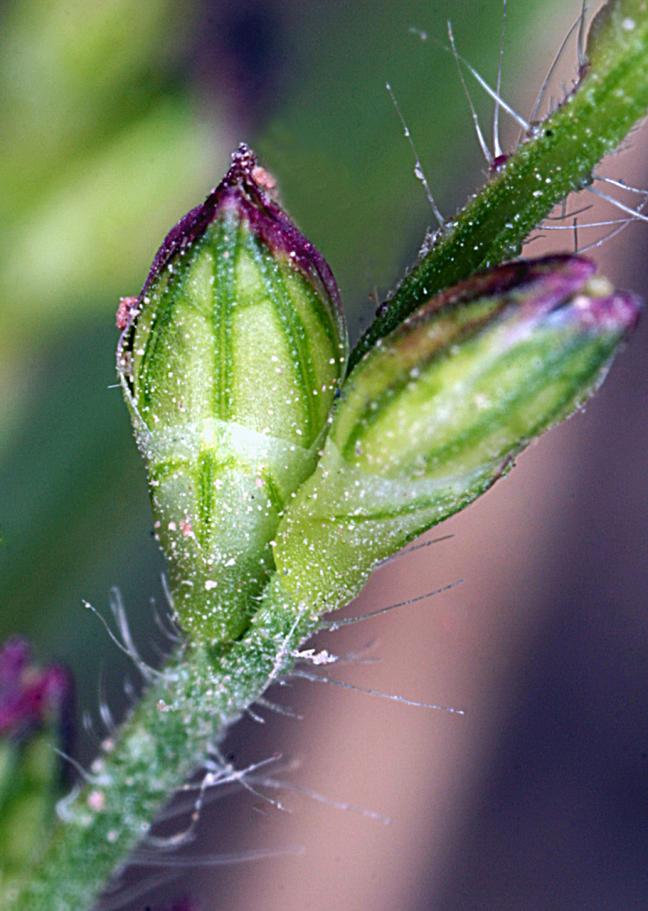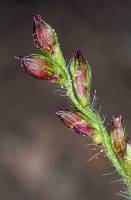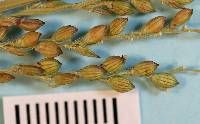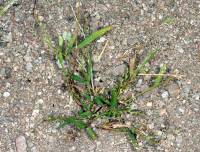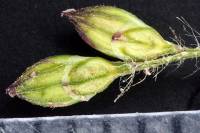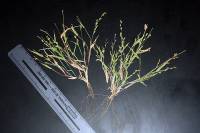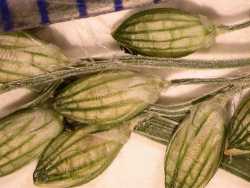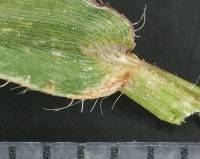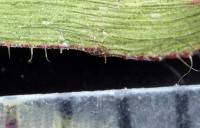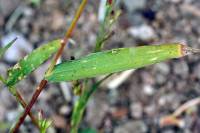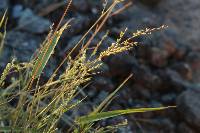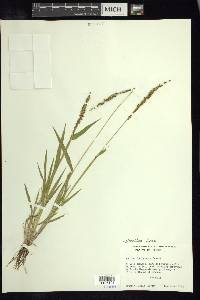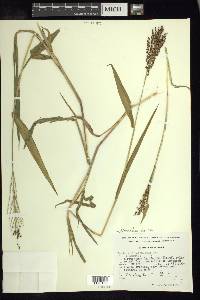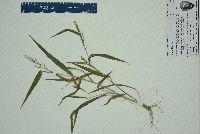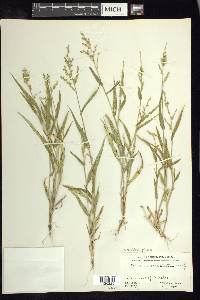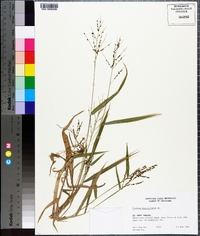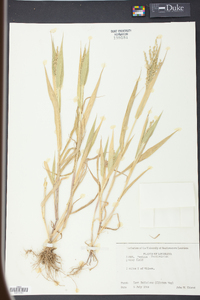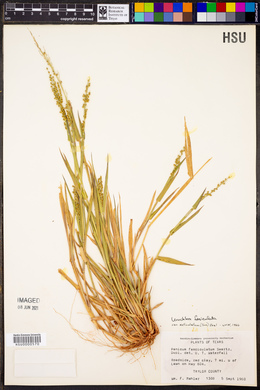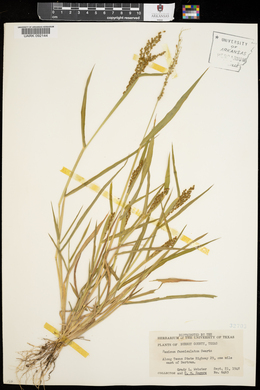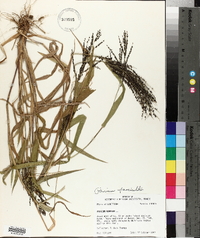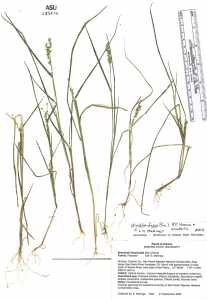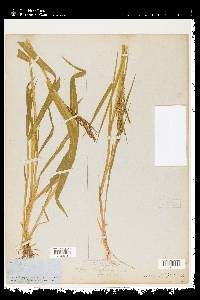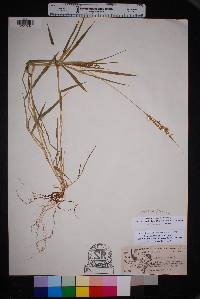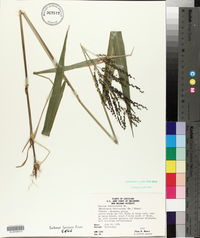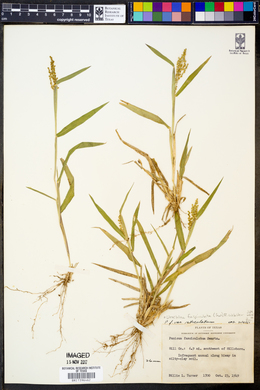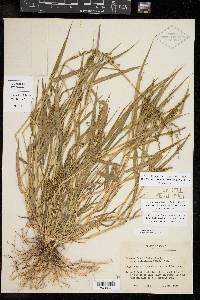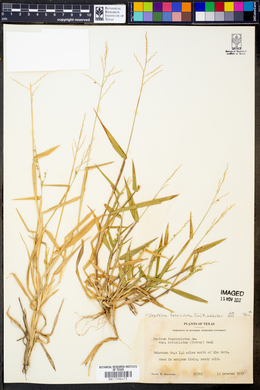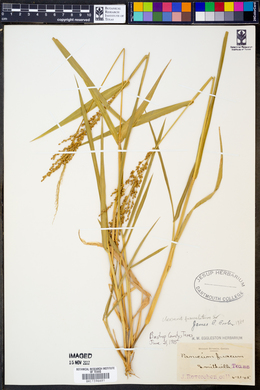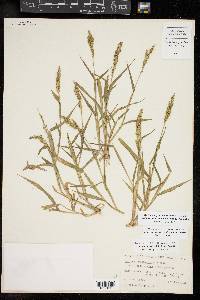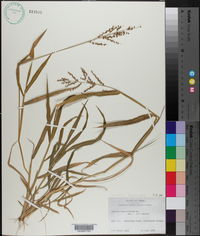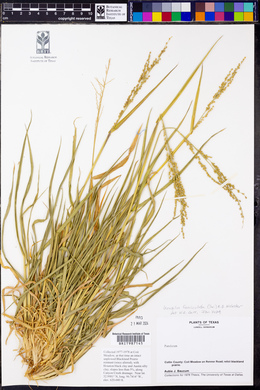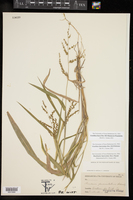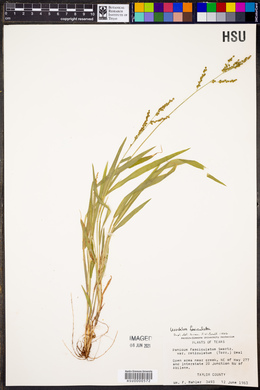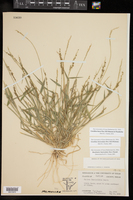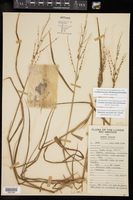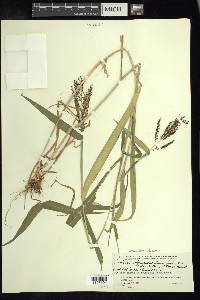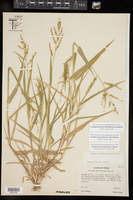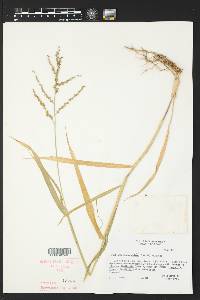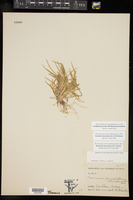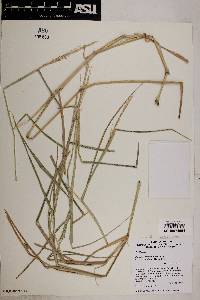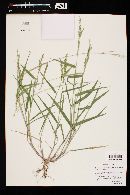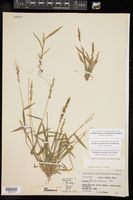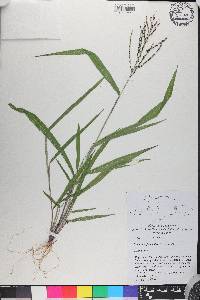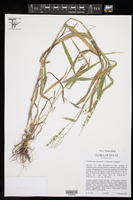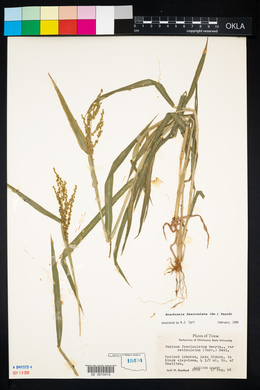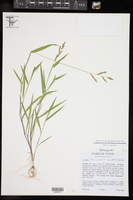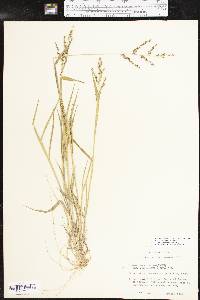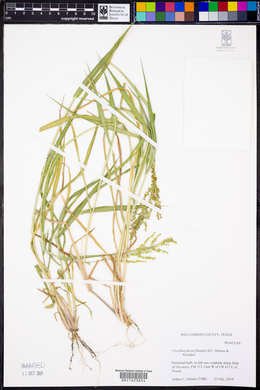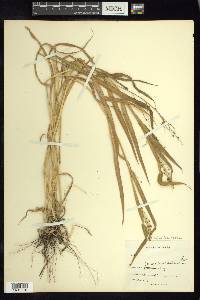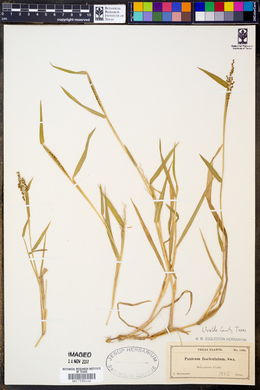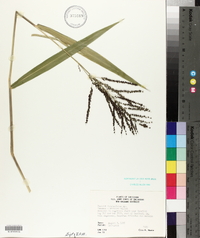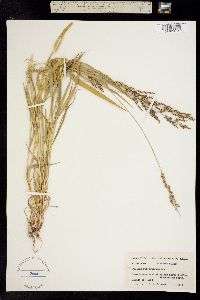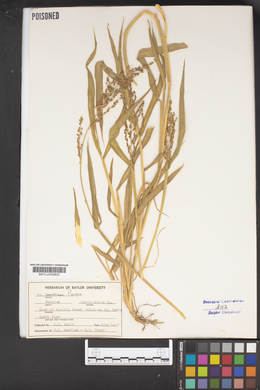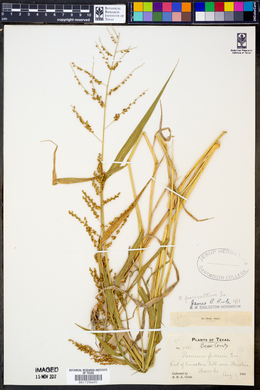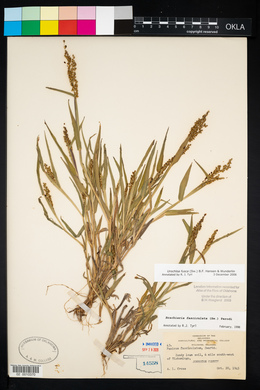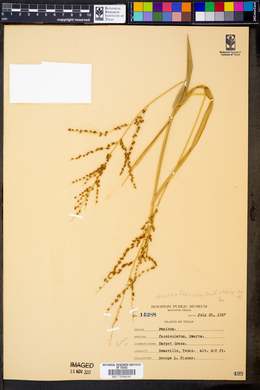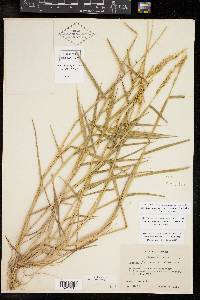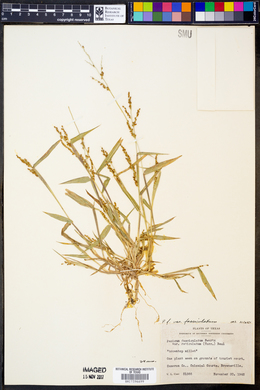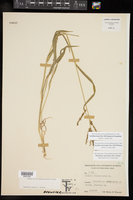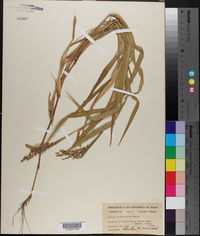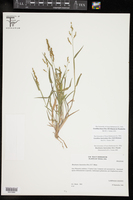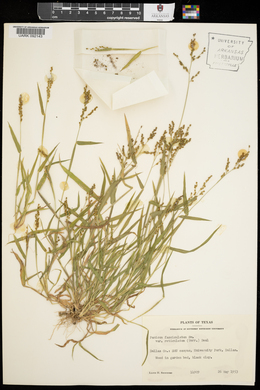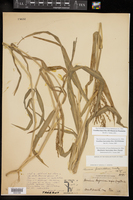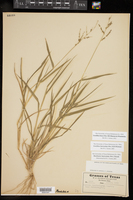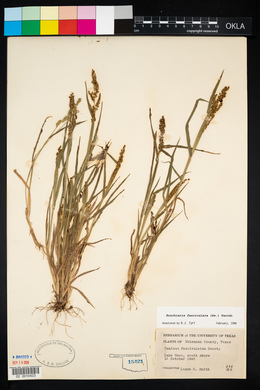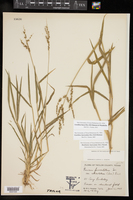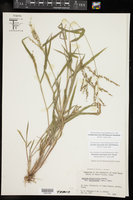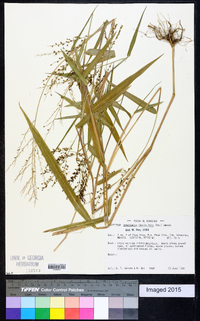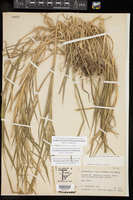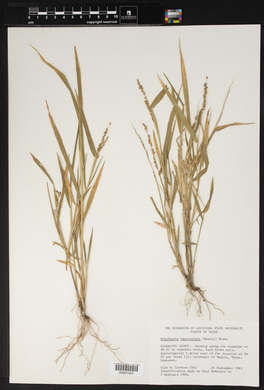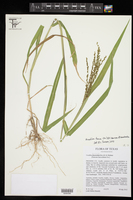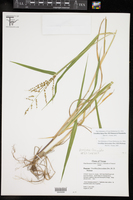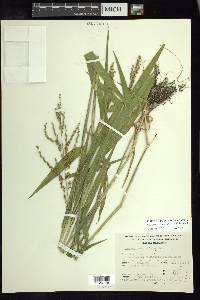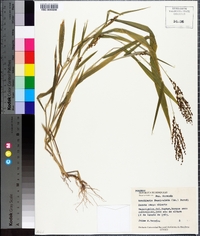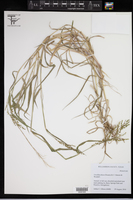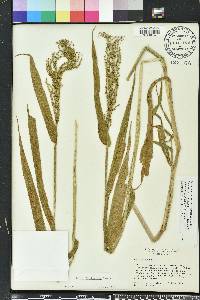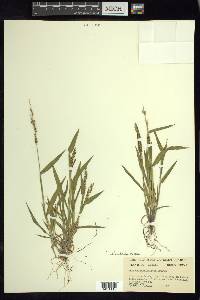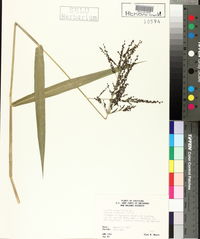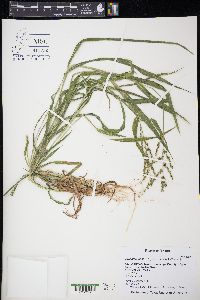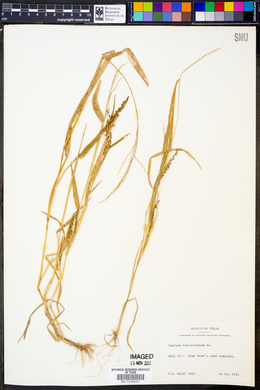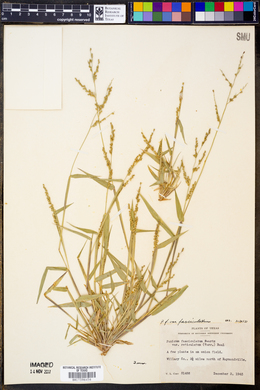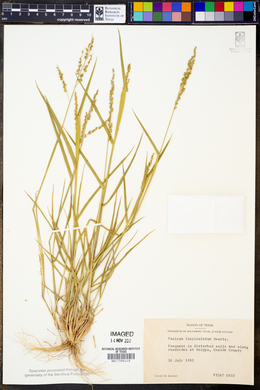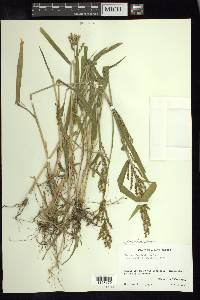Urochloa fusca
|
|
|
|
Family: Poaceae
Brown-Top Liverseed Grass, more...browntop signalgrass
[Brachiaria fasciculata (Sw.) Parodi, moreBrachiaria fasciculata var. carthaginense (Sw.) Beetle, Brachiaria fasciculata var. fasciculata (Sw.) Parodi, Brachiaria fasciculata var. reticulata (Torr.) Beetle, Brachiaria fasciculata var. stricta (Döll) Beetle, Panicum carthaginense Sw., Panicum chartaginense Sw., Panicum fasciculatum Sw., Panicum fasciculatum var. chartaginense (Sw.) Döll, Panicum fasciculatum var. fasciculatum , Panicum fasciculatum var. flavescens (Sw.) Döll, Panicum fasciculatum var. fuscum (Sw.) Döll, Panicum fasciculatum var. genuinum Döll, Panicum fasciculatum var. reticulatum (Torr.) Beal, Panicum fasciculatum var. strictum Döll, Panicum fastigiatum Poir., Panicum flavescens Sw., Panicum fuscatum J. Presl ex Nees, Panicum fusco-rubens Lam., Panicum fuscum var. fasciculatum (Sw.) Griseb., Panicum fuscum var. fuscum Sw., Panicum fuscum var. reticulatum (Torr.) Scribn. & Merr., Panicum illinoniense Desv., Panicum nigricans Willd. ex Spreng., Panicum spithamaeum Willd. ex Nees, Urochloa fasciculata (Sw.) R. Webster, Urochloa fasciculata var. reticulata (Torr.) R. Webster] |
Plants annual; tufted. Culms 15-120 cm, geniculate; nodes glabrous or shortly pilose. Sheaths glabrous or hispid, margins ciliate; ligules 1-1.5 mm; blades 3-33 cm long, 5-20 mm wide, glabrous or sparsely pilose on both surfaces, margins smooth or scabrous; collars pubescent. Panicles 5-15 cm long, 2-8 cm wide, simple, with 5-30 spikelike primary branches in more than 2 ranks; primary branches 2-10 cm, appressed to divergent, axils glabrous, axes 0.3-0.5 mm wide, triquetrous, scabrous or sparsely pilose; secondary branches usually present on the lower primary branches; pedicels scabrous and pubescent, shorter than the spikelets. Spikelets 2-3.4 mm long, 1.2-1.8 mm wide, obovoid, yellowish to reddish-brown or bronze-colored at maturity, mostly paired, in 2-4 rows, appressed to the branches. Glumes scarcely separate, rachilla internodes short, not pronounced; lower glumes 1-1.5 mm, at least 1/3 as long as the spikelets, glabrous, (1)3-5-veined; upper glumes (2)2.2-3.1 mm, glabrous, 7-9-veined, cross venation evident throughout; lower florets usually staminate, sometimes sterile; lower lemmas 2-3.1 mm, usually glabrous, 7-veined, cross venation evident throughout; lower paleas present; upper lemmas 1.8-2.9 mm long, 1.1-1.7 mm wide, apices acute to rounded, mucronate; anthers 1-1.6 mm. Caryopses 1-1.7 mm; hila punctiform. 2n = 18, 36. Urochloa fusca grows from the southern United States to Peru, Paraguay, and Argentina, usually in moist, often disturbed areas at low elevations. It frequently occurs as a weed, but is occasionally grown for forage and grain. Plants having smaller, more compact panicles and larger (2.4-3.4 mm), mostly yellowish spikelets have been called Urochloa fusca var. reticulata (Torr.) B.F. Hansen & Wunderlin. This variety is mainly found in the southwestern United States, but has been introduced into other areas, including Australia. Urochloa fusca (Sw.) B.F. Hansen & Wunderlin var. fusca usually has larger, more open panicles and smaller (2-2.5 mm), reddish-brown or bronze-colored spikelets. Much intergradation is reported between the two varieties. Further investigation is needed to establish that their recognition is warranted. FNA 2003 Common Name: browntop signalgrass Duration: Annual Nativity: Native Lifeform: Graminoid General: Annual, stems erect or decumbent and spreading below, 30-100 cm tall. Vegetative: Sheaths glabrous to papillose-hispid; blades glabrous or thinly pubescent, 3-33 cm long and 5-20 mm broad, rarely if ever ciliate margins; ligule a tuft of stiff white hairs. Inflorescence: Panicle 6-15 cm long, with appressed or erect-spreading, mostly simple branches; main panicle axis and branches scabrous or with scattered long, stiff hairs, short branchlets and pedicels usually hairy; spikelets 2.6-3 mm long, obovoid, yellowish-brown or golden-tinged at maturity; first glume thin, one-third to one-fourth as long as the spikelet; second glume and sterile lemma mostly reticulate with fine cross veins to well below middle, rounded at apex; fertile lemma rugose, nearly as long as the spikelet, the apex blunt, not short-beaked or cuspidate. Ecology: Found on sandy washes, open rocky slopes, often as a weed in disturbed soils; flowers July-October. Distribution: s AZ, s NM, TX and OK; south through the Greater Antilles, MEX to S. Amer.. Notes: The obovoid, semi-flattened, hard spikelets in an erect and spreading panicle, along with the more substantial, ciliate blades help to distinguish this species. Hard to tell from B. arizonica in the field. With a lens, look for the absence of enlarged bases of hairs on inflorescence branches. Previously treated within Urochloa. Ethnobotany: Unknown Etymology: Fusca means dark or brown. Synonyms: Urochloa fusca Editor: SBuckley 2010, FSCoburn 2015 |
|
|
|

